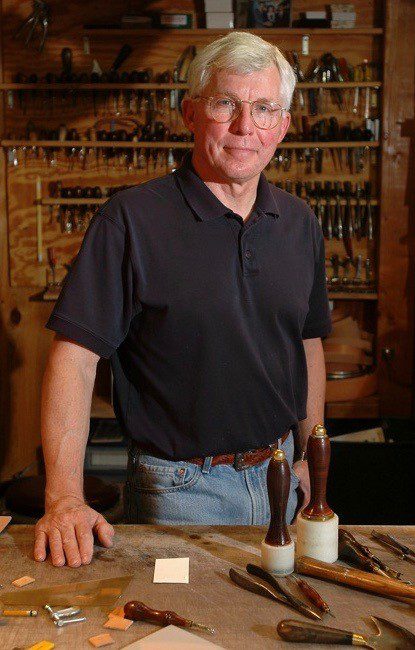July 17, 2022 @ 11:00 am - 12:30 pm
Come in out of the heat and wind up Rodeo Week with Master Leather Craftsman Jim Jackson as he describes carving and tooling “styles” that have been prominent in the western United States over the past 150 years. Jim’s presentation includes a walk throughout the gallery as he points out the work of both North American and Japanese carvers. Jim will discuss how their tooling was influenced by earlier American saddlemakers and leather carvers.
Registration for this program is full. Click the link below for information about the Griff Durham Lecture: The California Origins of the Stock Saddle.
James F. Jackson
 James Jackson’s interest in leather carving and the visual arts began in his father’s saddle shop in Wyoming. Designing leatherwork led him to academic studies and a Master of Fine Arts degree and teaching. While in graduate school at the University of Wyoming he taught design classes and worked as a museum curator. Throughout his life he has always maintained both a leather shop and painting studio. These two occupations have shaped the character of his work. Recently he was honored with a National Heritage Fellowship from the National Endowment for the Arts, Master Leather Artisan of the Year by the Academy of Western Artists, the Stohlman Award for excellence as a Master craftsman, and given the Wyoming Governor’s Arts Award in 2019. Jim currently displays his work and conducts discussions about designing leatherwork, carving processes, and regional history at The Brinton Museum’s leather shop in Big Horn, Wyoming.
James Jackson’s interest in leather carving and the visual arts began in his father’s saddle shop in Wyoming. Designing leatherwork led him to academic studies and a Master of Fine Arts degree and teaching. While in graduate school at the University of Wyoming he taught design classes and worked as a museum curator. Throughout his life he has always maintained both a leather shop and painting studio. These two occupations have shaped the character of his work. Recently he was honored with a National Heritage Fellowship from the National Endowment for the Arts, Master Leather Artisan of the Year by the Academy of Western Artists, the Stohlman Award for excellence as a Master craftsman, and given the Wyoming Governor’s Arts Award in 2019. Jim currently displays his work and conducts discussions about designing leatherwork, carving processes, and regional history at The Brinton Museum’s leather shop in Big Horn, Wyoming.
“I have always had a passion for drawing and laying out leather patterns. My leather carving and tooling is designed with the idea of creating energy and movement in the same way that exceptional music, dance and poetry shape our understanding of beauty.” Jim Jackson

